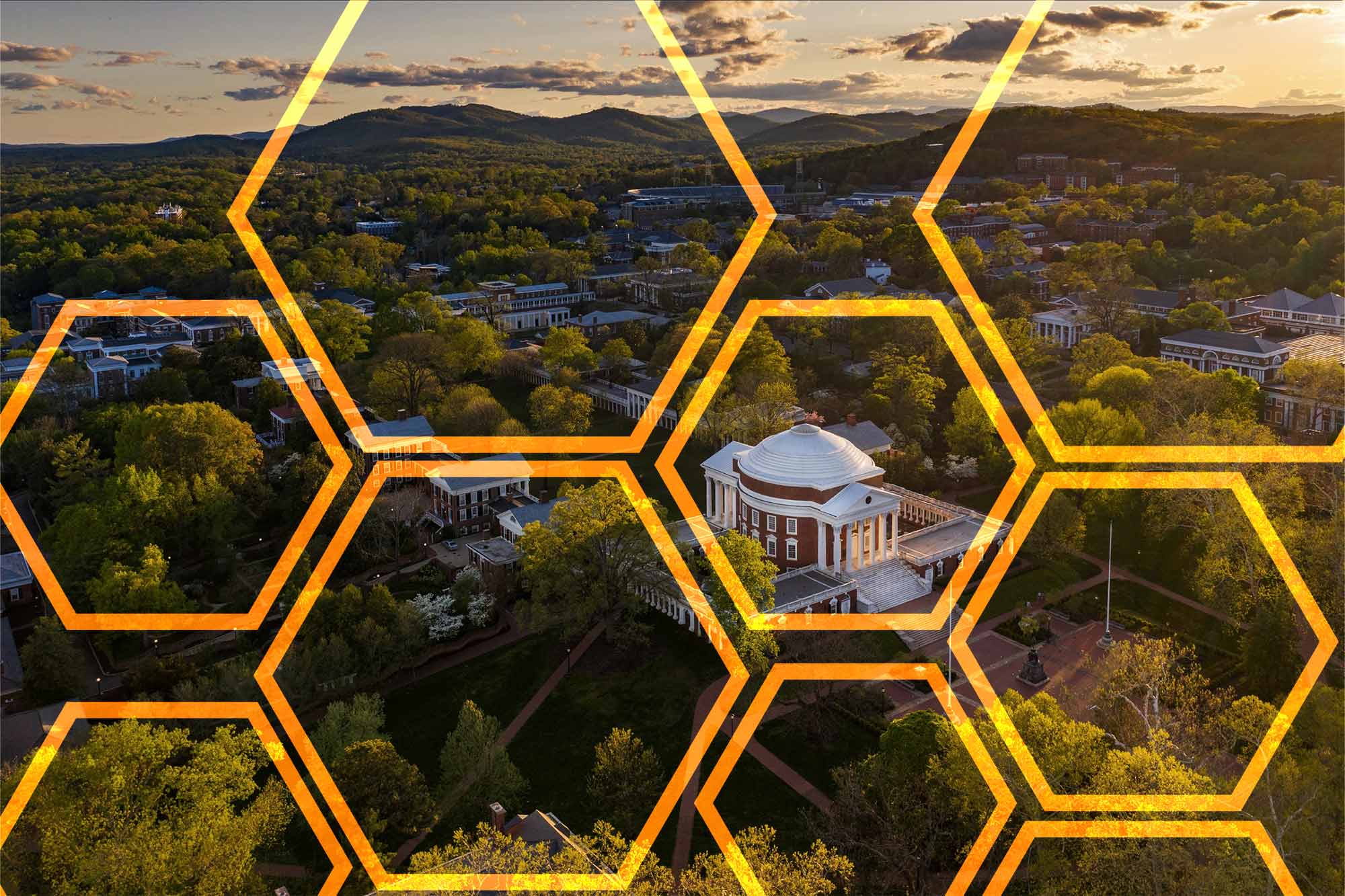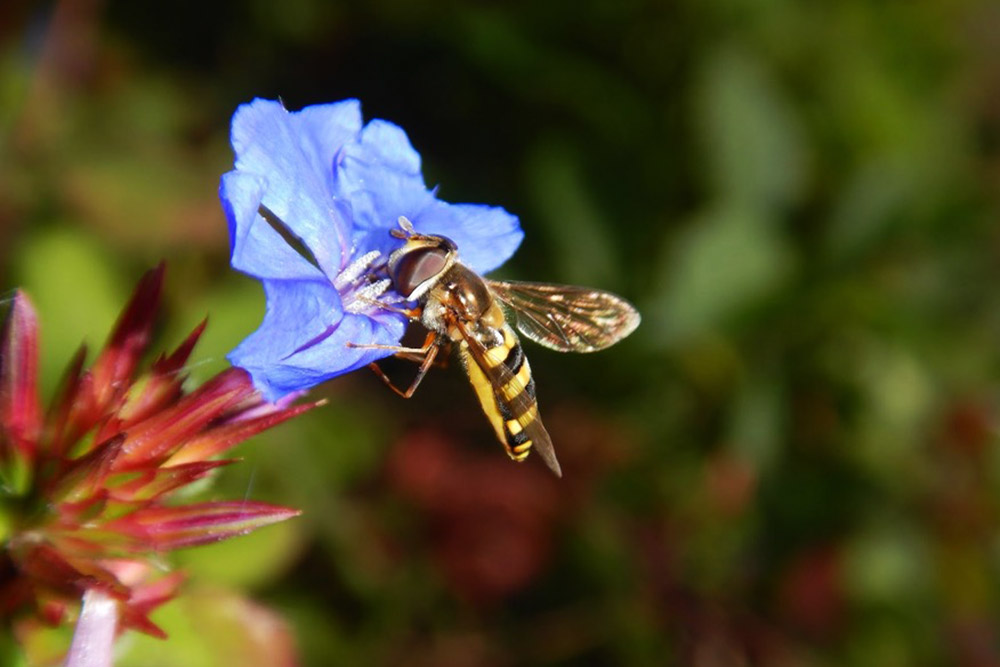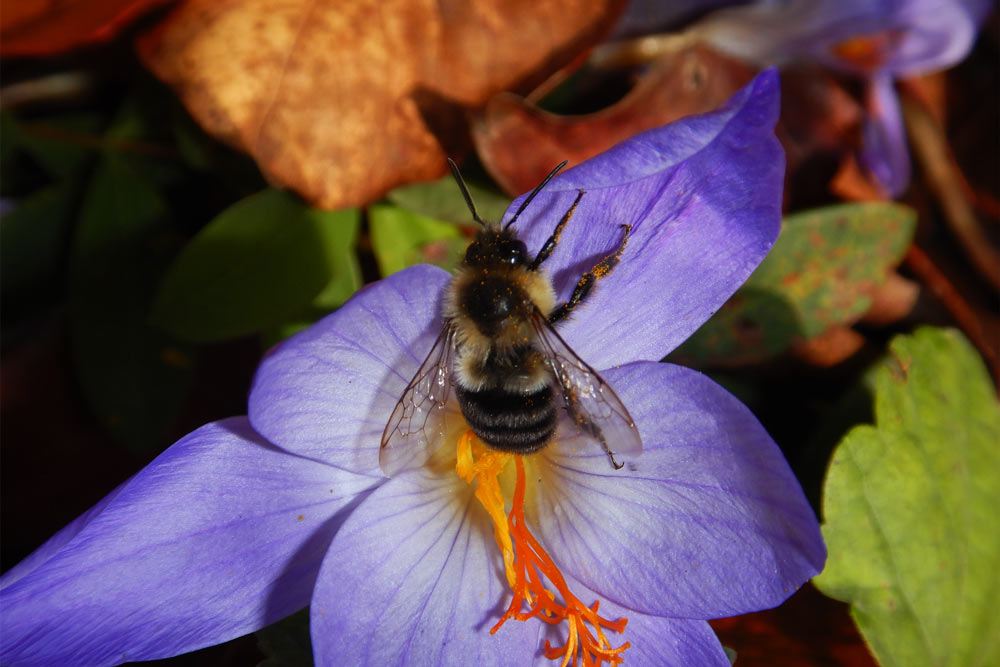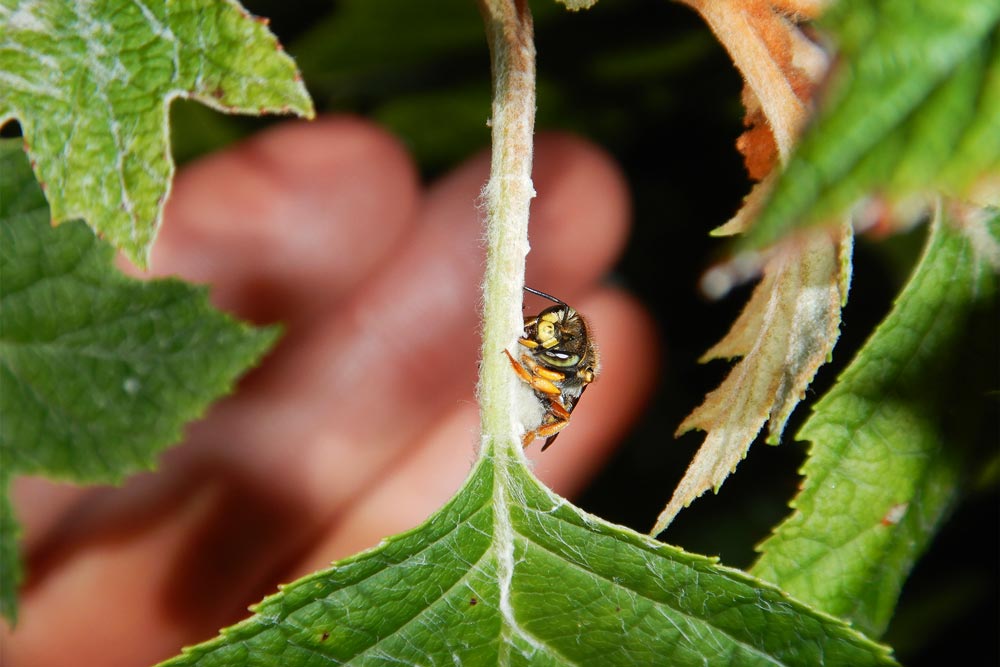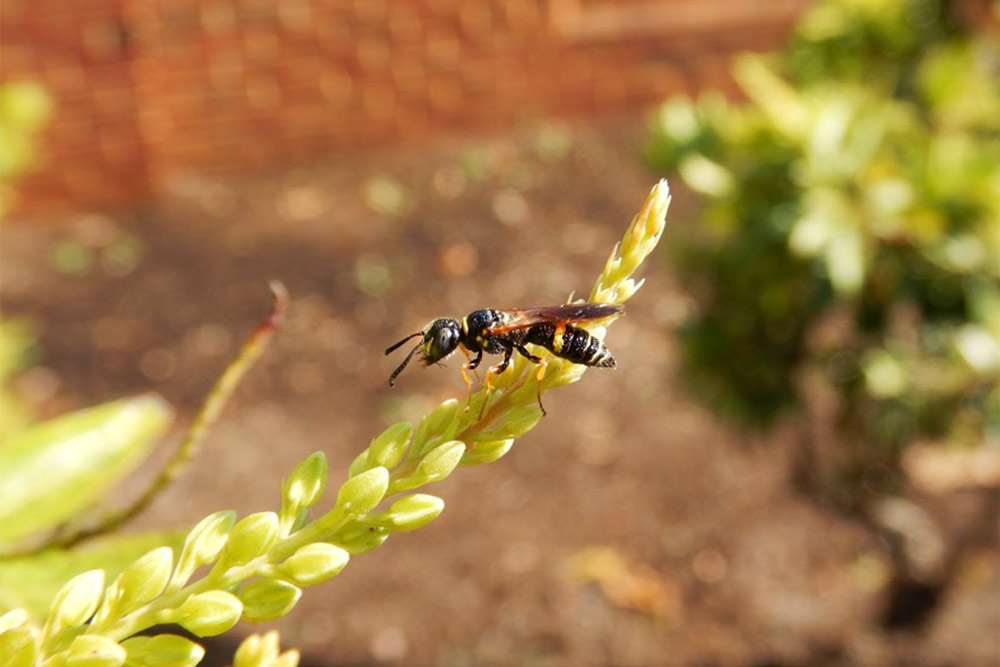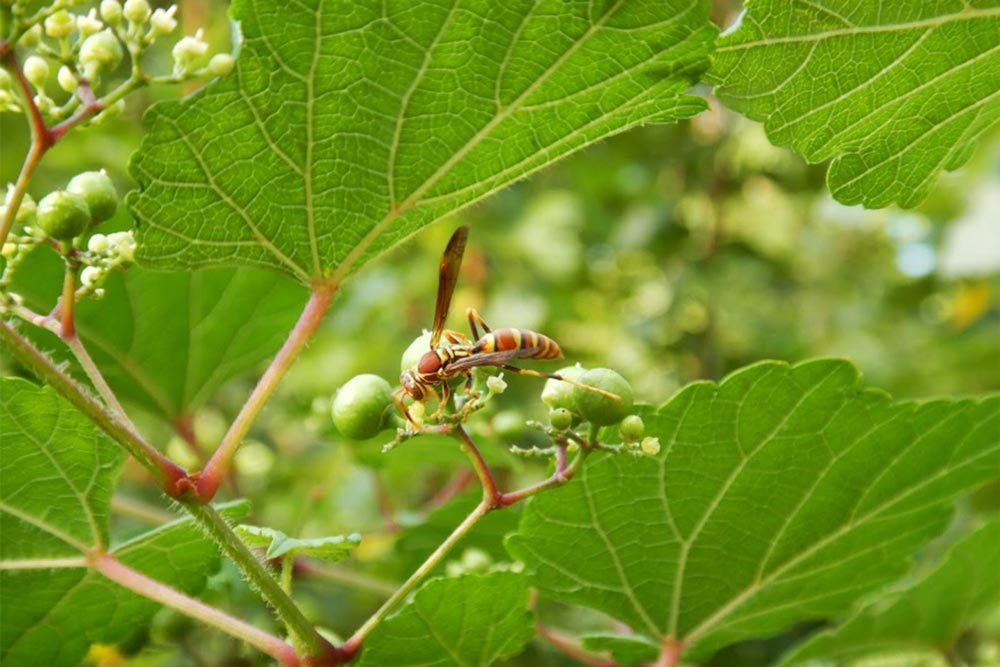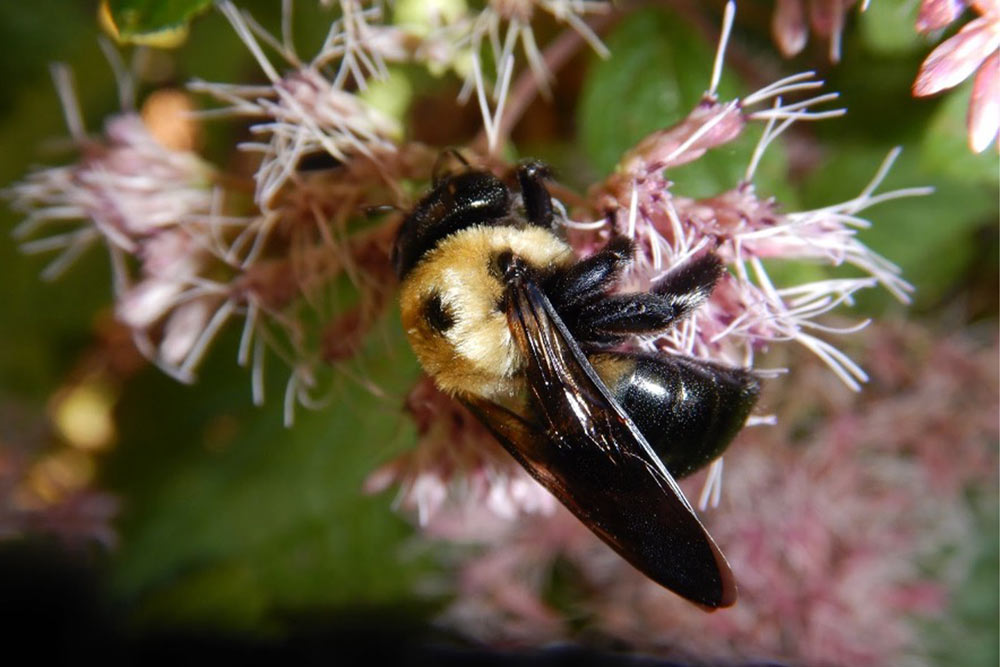According to the Bee City USA website, pollinators are essential to the environment and necessary for the reproduction of more than 85% of the world’s flowering plants, including more than two-thirds of the world’s crop species. In the United States, there are more than 100 crops that either need or benefit from pollinators. The economic value of these native pollinators is estimated at $3 billion per year in the U.S.
Agriculture aside, pollinators are a key species in most terrestrial ecosystems, with fruits and seeds derived from insect pollination being a major part of the diet of approximately 25% of all birds and of mammals ranging from red-backed voles to grizzly bears.
“There really is so much enthusiasm for pollinators that it just needs to be organized to make a real difference in our UVA community,” said Spindler, who is completing her master’s degree in environmental science.
University landscapers work on Grounds in a way that encourages pollinator species to thrive by providing beneficial habitat and minimizing the use of insecticides.
“We’ve actually been part of the Bee Grounds movement from the beginning, helping the founding students through the process of being certified,” Rich Hopkins, superintendent of landscaping for UVA, said. “I am a member of the Bee Grounds Committee continuing to help integrate the desire to be a pollinator-friendly Grounds into our maintenance and design process.”
The University has used ecologically conscious practices for years.
“It means being more tolerant of mixed-species lawns, so that our lawns will bloom with clover, violets and other native groundcover mixed in with the traditional lawn turf,” Hopkins said. “It means the lawns will be allowed to grow a little bit taller between mowings, which allows these other species to bloom for the pollinators.
“We are also looking for locations that we can stop frequent mowing altogether, allowing for an even greater variety of native plants that benefit pollinators.”
That approach, Spindler said, is what makes Bee Grounds possible.
“Facilities Management makes really good landscaping choices to make the least impact on the environment as possible,” Spindler said. “Essentially, native plants help maintain the diversity.”
Spindler said squash bee females, for example, use only squash pollen to feed their larvae in solitary underground nests. Without squash plants, those bees wouldn’t survive.
“A lot of bees have specific needs that can only be filled by some native plants because that's what they are adapted to,” Spindler said. “Some exotic plants can be important to pollinators too, such as bull thistle. Bumblebees and lots of other insects love bull thistle because it creates so much purple pollen and so much nectar.”
But while exotic plants like bull thistle do benefit bees, they can take over meadows and crowd out native plants, Spindler said. Having a variety of plants helps prevent habitat collapse and provides pollen for a variety of insects.
“The more plant species you have, the more resilient the ecosystem,” Spindler said. “Invasive exotic plants suppress diversity; you really have to plant native species to get the best balance because they've evolved over thousands of years together to be balanced on their landscape. Climate change is going to mean more challenges to our ecosystems, so we need the sturdiness of a balanced native ecosystem to sustain these changes.”
Aster Rasnick, who received a bachelor’s degree in conservation biology and Spanish linguistics, is currently a technician for Bee Grounds’ Grounds Engaged Learning for Sustainability initiative and interned with the working group a year prior to taking on this position. Rasnick and student technician Benjamin Van Rooy collect photographic data in selected vegetation beds on Grounds.
“We are looking at both the availability of floral resources for pollinators and the species that visit them over time,” Rasnick said. “Monitoring of species is performed not only by student technicians, but by community scientists, too.”
Rasnick hopes the data will inform targeted conservation strategies that protect wild pollinators.
